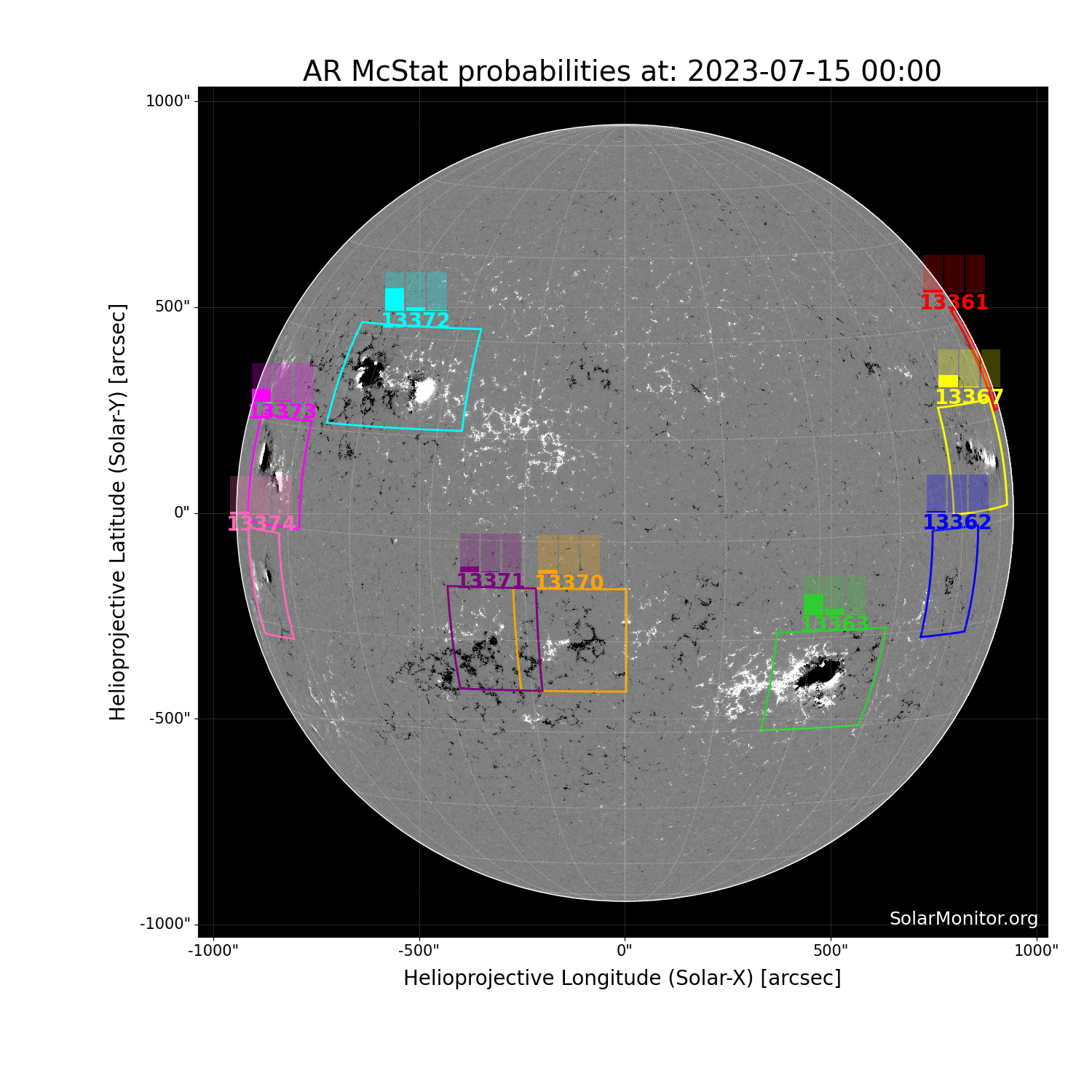
Flare Probabilities [%] (00:00 UTC +24H) ?
| NOAA | C+ | M+ | X+ | Mean ? | |||||
|---|---|---|---|---|---|---|---|---|---|
| MCEVOL ? | MCSTAT ? | MCEVOL | MCSTAT | MCEVOL | MCSTAT | C+ | M+ | X+ | |
| 13361 | 10 | 8 | 1 | 1 | 0 | 0 | 9 | 1 | 0 |
| 13362 | 6 | 5 | 0 | 0 | 0 | 0 | 5 | 0 | 0 |
| 13363 | 40 | 54 | 4 | 16 | 1 | 2 | 47 | 10 | 1 |
| 13367 | 58 | 33 | 18 | 4 | 0 | 0 | 46 | 11 | 0 |
| 13370 | 11 | 9 | 3 | 0 | 0 | 0 | 10 | 2 | 0 |
| 13371 | 7 | 15 | 0 | 1 | 0 | 0 | 11 | 1 | 0 |
| 13372 | 67 | 58 | 10 | 10 | 5 | 2 | 63 | 10 | 4 |
| 13373 | - | 33 | - | 4 | - | 0 | 33 | 4 | 0 |
| 13374 | - | 8 | - | 1 | - | 0 | 8 | 1 | 0 |
SolarMonitor's flare prediction system's probabilities are calculated using the NOAA Space Weather Predicion Centre's McIntosh classifications. There are two methods, MCSTAT and MCEVOL, that use sunspot-group McIntosh classifications and Poisson statistics to calculate flaring probabilities valid for a 24-hr period starting at 00:00 UTC. The flaring probabilities are calculated using historical data from solar cycles 23 and 24 (1996-2019).
MCSTAT (McIntosh Statistics): Uses the point-in-time McIntosh classification to calculate Poisson flaring probabilities. Details about the method [1] and forecast verification testing [2] can be found in the following papers:
[1] Gallagher, P. T., Moon, Y.-J., Wang, H., Solar Physics, 209, 171, (2002)
[2] Bloomfield et al., 2012, The Astrophysical Journal Letters, 747, L41
[1] McCloskey, A.E., Gallagher, P.T. & Bloomfield, D.S., Solar Physics, 291, 1711, (2016)